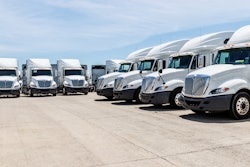Navigating the oceans of imperfect information is called “business.”
The freight industry lives with many unknowns every day. Residual value is usually one of those unknowns. Put simplistically, residual value is what you get for your truck when you turn it over to a new owner or scrap it.
When you buy a truck, you have some projection of how long you will own it, some historical data on how similar trucks have depreciated over time, and a hope that the marketplace doesn’t change unpredictably between today and that future time — but you know it will.
Used trucks exist in that space controlled by supply and demand. The market is cyclical. In some years there are too many used trucks and in other years there are too few – or the wrong ones. Some years there is a rush to buy new trucks, and from experience that means about five years later there will be an oversupply of used ones. Then there is the economy, which can be a rollercoaster ride all its own. There is the technology side of it as well. Some technologies can get a premium in the used market and others have no value. But all of that is somewhere in the future – a future over which a fleet operator has very little control.
Residual value is typically not guaranteed, although there are examples where residual value has been guaranteed when buying a new truck. In those arrangements, the seller is assuming the risk of the market shifting. That business model has a somewhat checkered past. More often, the buyer assumes the risk on where the used vehicle market will price the vehicle in the future.
If you think about it, a good Class 8 production year is between 250,000 and 350,000 trucks, meaning there likely are at least that many used trucks coming into the market as well. There is a lot of data on used truck sales over time. And just as with all the decades of detailed data for the stock market, all that used truck data is potentially completely useless in predicting future value.
If you want some examples of that, look at 2008 to 2010, or 2020 to 2022. It’s a pretty sure bet that predictions of used truck prices made in 2007 and in 2019 were completely wrong in 2009 and 2021. Modeling pricing with some confidence works great if all the variables behave in some predictable way. The real world keeps reminding us that the future is far from predictable.










